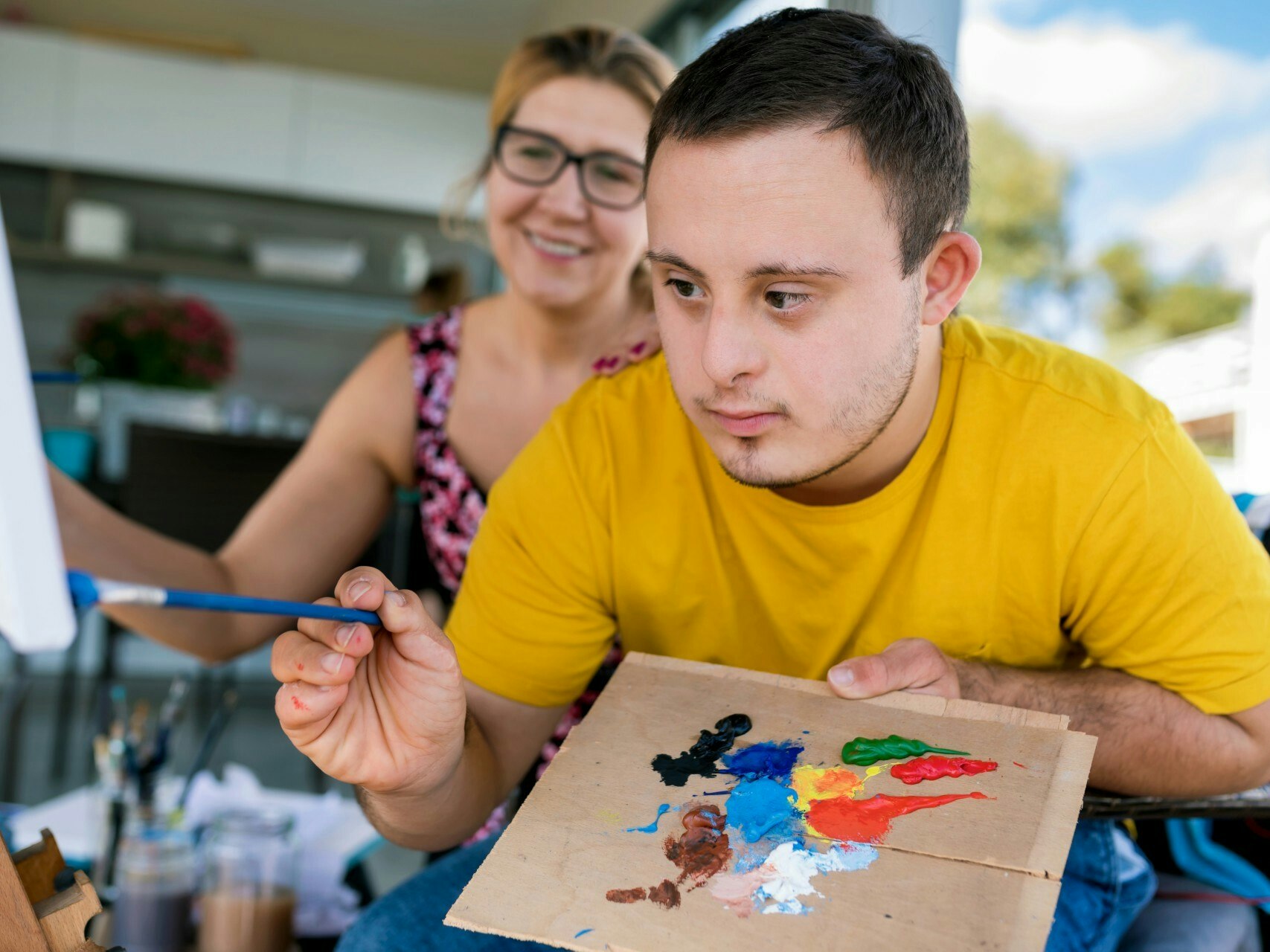What are the different types of disabilities?
Last updated

There are many different types of disabilities and each category of disability can affect people in different ways. People may also have more than one type of disability at a time.
Key points
- There are many different disabilities that can generally be grouped into four categories
- The categories can help you understand how a disability may impact a person’s life
- People can have more than one type of disability
In general, a disability is a physical, mental, cognitive or developmental condition that limits a person’s ability to engage or take part in everyday activities or interactions. The condition is permanent or likely to be permanent.
A majority of disabilities are not visible to others, even if they are physical disabilities, so it is important not to assume someone has or doesn’t have a disability based on the way they look or act.
There are also different causes of disability, including genetic conditions, injury, illness and complications during pregnancy or birth.
Sometimes, the cause of disability can even be unknown – and some people with disability live without a formal diagnosis.
The different types of disabilities can roughly be grouped into the four main categories below:
Physical disabilities
A physical disability involves long-term or permanent loss of part of your body’s physical function.
It can affect your mobility, stamina or skills in performing tasks.
Physical disabilities can be genetic or the result of something that happened during pregnancy or birth, or can be acquired because of an injury or illness.
Physical disabilities commonly include amputation, acquired brain injury, cerebral palsy, epilepsy, motor neurone disease, multiple sclerosis, muscular dystrophy, Parkinson’s disease, polio, respiratory disorders or spina bifida.
Intellectual disabilities
There is a wide range of intellectual disabilities, or cognitive disabilities, which vary from person to person.
Somebody with an intellectual disability may think differently to others, learn at a different pace or communicate in different ways, which can pose challenges in relationship building, education, behaviour, inclusion and employment.
Intellectual disabilities can be genetic or caused by complications during pregnancy or birth, through some illnesses, exposure to alcohol or drugs, or following an accident.
The most common intellectual disabilities include autism, developmental delay, Down syndrome, fetal alcohol syndrome and fragile X syndrome.
Sensory disabilities
Every day we use our senses to understand the world around us. For someone with a sensory disability, this is more difficult.
A sensory disability affects a person’s senses – like their sight, hearing, smell, touch, taste or spatial awareness.
People with sensory disabilities may feel sensory input more or less intensely than other people, which impacts on a person’s interactions and behaviours in different environments and their ability to perform daily activities.
For people with sensory difficulties there are three main components:
- Sensory modulation disorder is an issue with turning sensory messages into controlled behaviour that matches the nature and intensity of the sensory information. For example, over-reactions to touch, movement, sound, odours and taste can cause discomfort, avoidance, a tendency to be easily distracted and anxiety
- Sensory based motor disorder is an issue with stabilising, moving or planning a series of movements in response to sensory demands. For example, deficits in balance, gross motor and fine motor coordination
- Sensory discrimination disorder is an issue with sensing similarities and differences between sensations. For example, incorrect processing of visual or auditory input, inattentiveness and disorganisation
The most common sensory disabilities include autism, hearing impairment, sensory processing disorder and vision impairment.
Psychological disabilities
According to the World Health Organisation, mental health is a state of wellbeing in which every individual realises their own potential, can cope with the normal stresses of life, work productively and is able to make a contribution to their community.
Severe mental health conditions can cause psychological disabilities. Someone living with a mental health condition may withdraw from work, education and social activities as it affects thoughts, moods, behaviour and the way people perceive the world around them.
People with mental health conditions may require medication or regular therapy to manage their condition.
It is important to remember not all mental health conditions are considered a disability under the National Disability Insurance Scheme (NDIS).
However, if the condition causes a psychosocial disability that is permanent or likely to be permanent, has a significant impact on a person’s everyday life and their participation in the community and is likely to require lifelong support, you may receive NDIS support as long as you meet the age and residency requirements.
Common mental health conditions include schizophrenia, obsessive compulsive disorder (OCD), post traumatic stress disorder (PTSD) and depression.
Remember that people can have more than one disability at a time and that their disabilities may impact them in different ways as everyone is different.
What else would you like to know about disability? Tell us in the comments below.
Related content:
Disability at different ages
What are the types of hidden disabilities?
Long COVID and disability – what you need to know